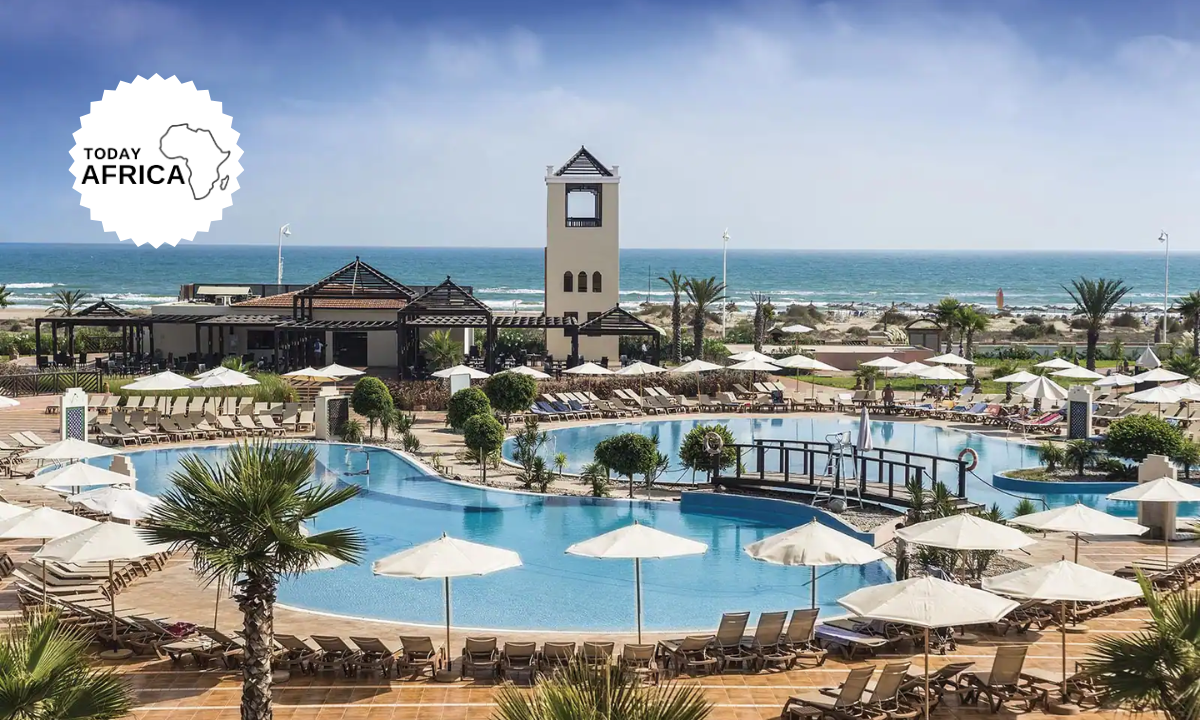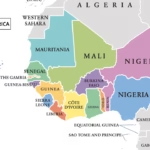Embarking on a Kenyan safari is an unforgettable adventure. Witnessing the majestic landscapes, diverse wildlife, and rich culture firsthand creates memories that last a lifetime. But before you jump on the plane, there’s one crucial element to consider: what to wear.
Kenya’s climate and safari activities demand specific clothing choices that prioritize comfort, practicality, and a touch of adventure-ready style. This comprehensive guide equips you with all the knowledge you need to pack the perfect safari wardrobe.
Understanding the Kenyan Climate
Kenya boasts a warm climate year-round, with variations depending on altitude and region. Generally, expect hot and sunny days with cooler mornings and evenings, especially during game drives. Rainfall patterns differ, with the wet season occurring from March to May and November to December.
Here’s a breakdown of what to expect:
- Dry Season (June – October): Hot and sunny days with average temperatures ranging from 24°C (75°F) to 32°C (90°F). Nights can be cool, dropping to around 15°C (59°F).
- Wet Season (March – May & November – December): Warm days with average temperatures around 27°C (80°F) and frequent afternoon showers. Nights remain mild.
Remember, these are averages. It’s always wise to check the specific forecast for your travel dates and chosen safari location.
Dressing for Comfort
The cornerstone of any successful safari wardrobe is comfort. You’ll be spending long hours in the vehicle, exploring on foot, and maneuvering through diverse terrain. Here’s where breathable, quick-drying fabrics become your allies:
- Cotton: A natural and breathable choice, perfect for hot days. Opt for lightweight, loose-fitting cotton shirts, pants, and safari dresses.
- Linen: Another natural fabric known for its excellent breathability and thermoregulating properties. Linen shirts and trousers add a touch of sophistication to your safari look.
- Nylon Blends: Synthetic fabrics like nylon or nylon blends offer quick-drying capabilities, ideal for sweaty situations or unexpected rain showers. Choose shirts and pants with a high cotton content for breathability.
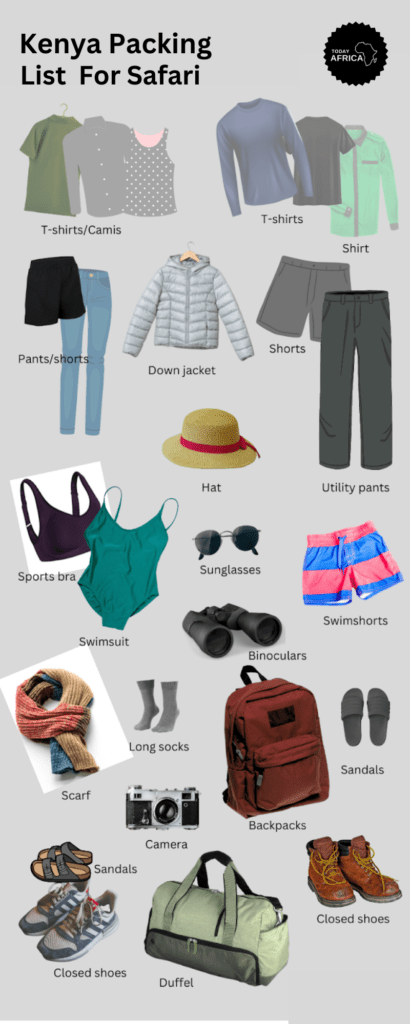
Avoid: Fabrics like heavy denim, wool, and synthetic materials that trap heat and moisture.
Blending in with the bush
While the classic khaki safari outfit never goes out of style, practicality trumps aesthetics on a safari. Here’s the color theory for blending in with the environment and maximizing wildlife viewing:
- Earthy tones: Opt for neutral colors like khaki, beige, brown, olive green, and sand. These tones camouflage you within the African bush, allowing you to get closer to the animals without spooking them.
- Avoid: Bright colors, white, and black. These can stand out in the landscape and potentially attract unwanted insects like tsetse flies.
Remember: This doesn’t mean your wardrobe has to be drab! Muted greens, blues, and yellows can add a touch of personality while maintaining wildlife-friendly tones.
See Also: 11 Best Places to Visit in Zimbabwe This Year
Essentials for Your Kenya Safari Clothing
Now that we’ve covered the basics, let’s delve into the specific clothing items you’ll need for your Kenyan adventure:
Tops:
- Long-sleeved shirts: Protect yourself from the sun, insect bites, and occasional brush with prickly vegetation. Choose breathable, quick-drying fabrics with roll-up sleeves for versatility.
- T-shirts: Pack a few lightweight t-shirts for hot days. Consider moisture-wicking fabrics for optimal comfort.
- Safari vests: A timeless and practical choice, offering pockets for storing essentials like sunglasses, sunscreen, and your camera.
Bottoms:
- Safari Pants: Convertible pants with zip-off legs provide adaptability for different weather conditions. Look for pants with cargo pockets for storing small items.
- Khaki Shorts: Ideal for hot days, but ensure they’re long enough to protect your legs from the sun and insects.
- Hiking Trousers: Opt for lightweight, quick-drying hiking trousers with good flexibility for exploring on foot.
Additional considerations:
- Underwear: Pack plenty of comfortable, breathable underwear made from natural fibers like cotton.
- Swimwear: If your safari lodge has a pool or offers water-based activities, pack a swimsuit and a quick-drying cover-up.
- Pajamas: Choose comfortable, lightweight pajamas for relaxing evenings at the camp.
Additional Tips
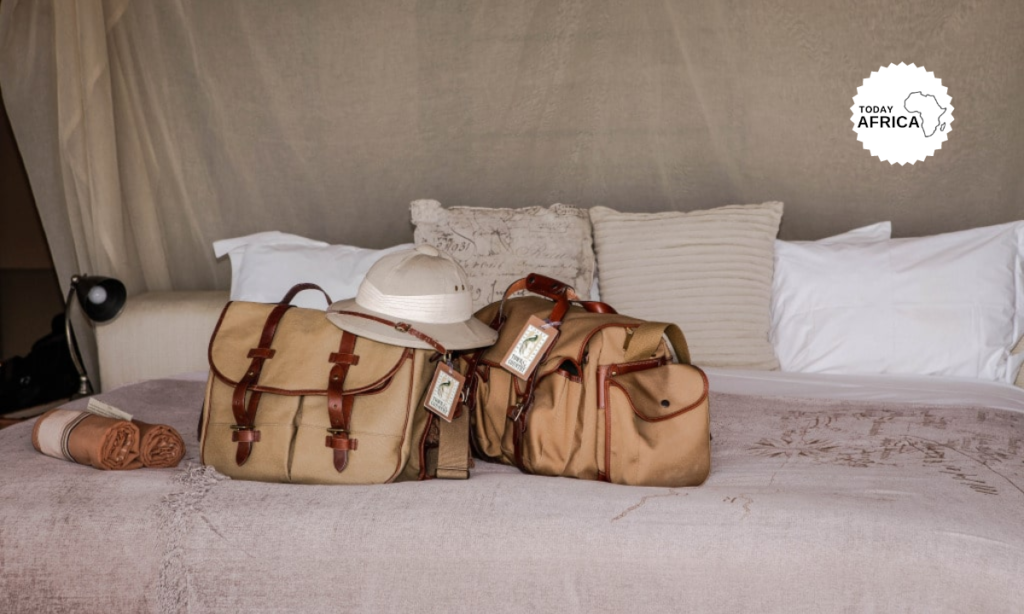
1. Packing essentials
- Binoculars: Enhance your wildlife viewing experience by bringing a pair of binoculars to spot animals from a distance.
- Safari hat: In addition to sun protection, a safari hat with a neck flap provides extra coverage for your neck and ears.
- Sunglasses: Protect your eyes from harsh sunlight and glare with a good pair of polarized sunglasses.
- Insect repellent: Ward off mosquitoes and other insects with a DEET-based insect repellent.
- Sunscreen: Apply a high SPF sunscreen regularly to prevent sunburn, even on overcast days.
- Camera gear: Capture your safari memories with a DSLR camera or smartphone equipped with a telephoto lens for close-up shots of wildlife.
- First aid kit: Remember that you will be in the bush away from the town or village. Be sure to pack yourself a first aid kit with medications you might need like aspirin, cold medicine in case you do catch a bug, an antihistamine for reactions to insect bites, diarrhea medication like Immodium, sunscreen and cough drops or throat lozenges.
2. Respect local customs
- Cultural sensitivity: When visiting local communities or villages, dress modestly out of respect for cultural norms.
- Safari chic: Embrace the safari chic aesthetic with lightweight, comfortable clothing that still looks stylish in photos.
- Leave no trace: Pack out everything you bring into the wilderness, including clothing and trash, to minimize your impact on the environment.
3. Layering for temperature changes
- Early mornings and late evenings: Layer up with a long-sleeved shirt, fleece, and jacket to stay warm during chilly game drives.
- Midday heat: Shed layers and opt for breathable fabrics like cotton to stay cool and comfortable in the heat of the day.
4. Practicality over fashion
- Functionality: Choose clothing and footwear based on practicality rather than fashion. Comfort and durability are key when traversing rugged terrain and encountering unpredictable weather conditions.
- Utility pockets: Clothing with multiple pockets allows you to carry essentials like sunscreen, insect repellent, and camera gear without the need for a separate bag.
See Also: 18 Things to do in Hurghada Egypt This Year
Kenya Safari Clothing Tips
- Don’t overdo it. Packing too much for safaris is a common mistake.
- Soft bags are recommended as safari luggage. Go with a good quality, hardy duffel bag that is light and secure. Nothing fancy.
- When going on a guided group safari, you don’t need to worry about the emergency first-aid kit and most of your meals are included in the tour price.
- Your guides know where to stop for supplies and can get hold of the most important things, if and when you are caught unprepared.
- Towels, bedding/sleeping bags, and basic toiletries may be provided as part of your safari tour – check when booking your safari.
- Remember not to pack your valuables into your main luggage (stored in the baggage compartment of the plane) when flying as bags do go missing at times.
Choosing the right Kenya safari clothing is essential for ensuring comfort, protection, and enjoyment throughout your adventure. By selecting lightweight, breathable fabrics, opting for neutral colors, and packing versatile pieces, you’ll be well-prepared to embrace the wonders of Kenya’s wildlife and landscapes.

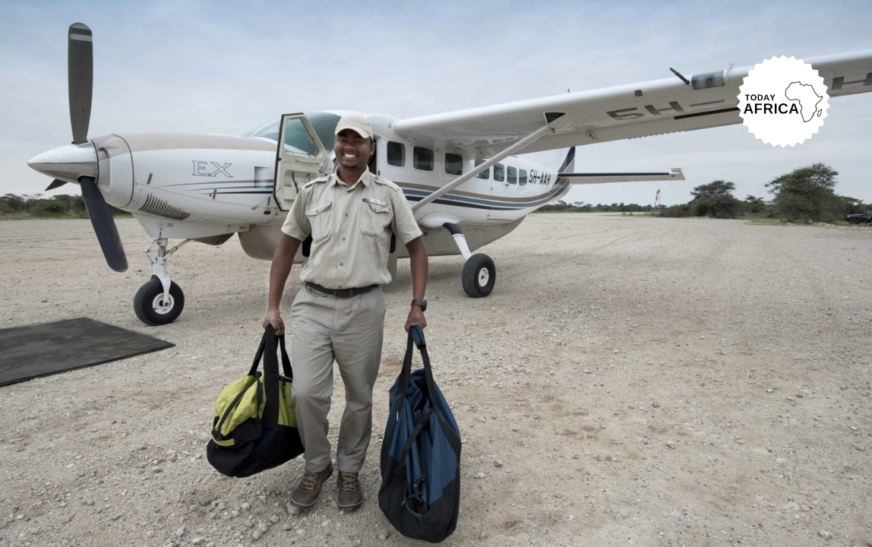

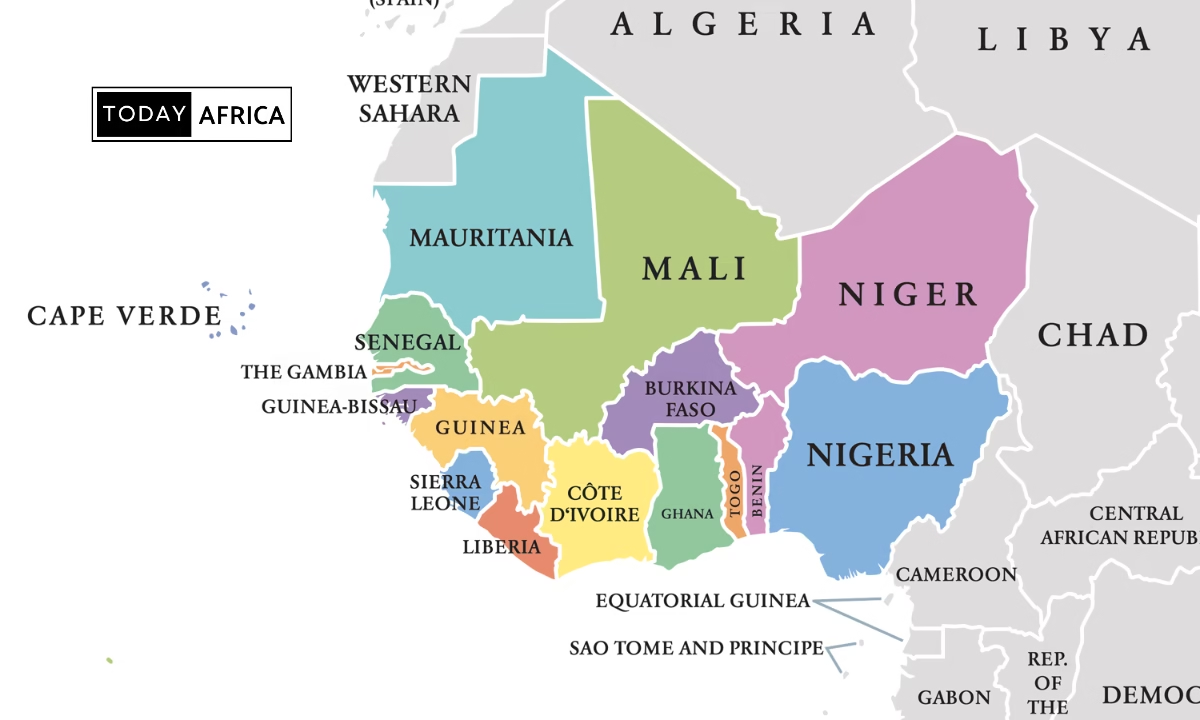



![15 Best Beaches in Morocco to See This Year [& Essential Packing List]](https://todayafrica.co/wp-content/uploads/2023/12/Blue-Simple-Dad-Appreciation-Facebook-Post-1200-×-720-px-6-9.png)


